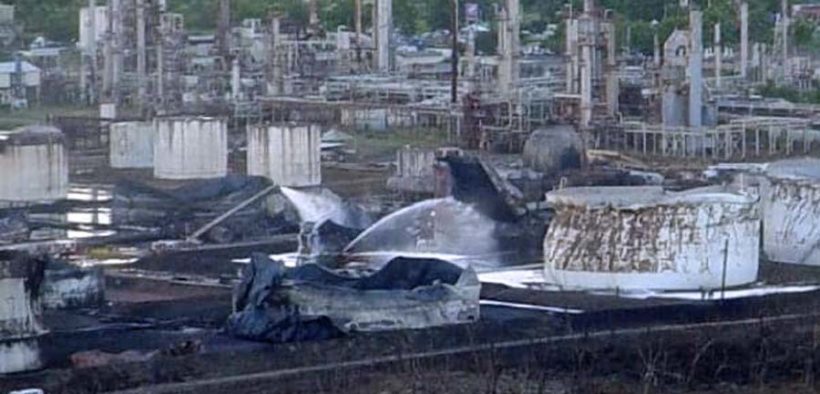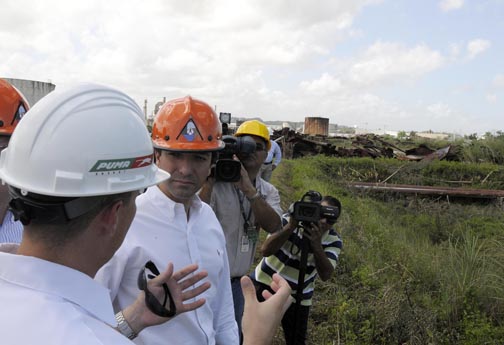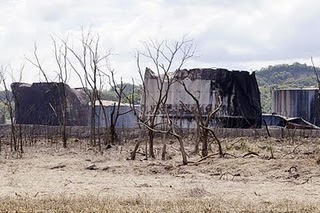Op-Ed: Looking back at public relations lessons learned during CaPeCo fire, explosion

It was the case that changed my public relations career. A loud thump woke me up from deep sleep that Thursday night. I was beyond exhausted when I put my preschoolers to bed that day. Our annual Halloween bash was only three days away and I had taken two days off from work to turn our home into a haunted mansion. My eldest daughters had been helping around that day after I picked them up from school to set the 6-foot spider in front of our lawn and put some cobwebs in the dining room chandelier. It was a day I will remember forever.
An earthquake followed the noise. After the initial haziness, I went out on the street to find a large smoke column rising to the back of the house coming from Guaynabo area. Early news reports in radio-within minutes-alleged a fire in a gas station in nearby Santa Rosa area in Bayamon. My instinct told me this was larger.
A few minutes into the confusion I called our Response and Remediation Branch chief. He lived in Gurabo, back then. “There is a large fire in Santa Rosa, Bayamon apparently. Please call our Emergency Response National Hotline.”
In a few hours we had learned that the petroleum tank farm I passed by every weekday morning at 5 a.m. on my way to the gym at Ft. Buchanan had been the site of the explosion. The former refinery known as CaPeCo (Caribbean Petroleum Company) or Gulf (because of old logos) had a total oil storage capacity of 90 million gallons and more than 60 million gallons of material stored at the time of the explosion.
Later calculations showed there was approximately 30 million gallons of product in the affected tanks. Most of the facility caught fire. Many adjacent communities — including mine — had been within the range where the earthquake was felt.
CaPeCo changed my entire career. It gave me my first major communication crisis. During the first week of the emergency, my hair started to fall off. I also lost 5 pounds and spent the next three months working from a trailer amongst very technical people, engineers, firemen and investigators.
I also had to prepare to brief my management in Puerto Rico along with my regional colleagues, work with the communities affected and handle all media requests from local reporters. The lessons learned have been invaluable and have been a guide in future emergencies.
What did I learn?
The crisis communication plan is vital
Every single company, industry, organization, and government agency needs a crisis management plan. Thinking of the unthinkable, and the assigned actions, roles, and responsibilities of your staff so you aren’t left out in the dark is crucial to navigate an unforeseen circumstance.
A unified response is crucial
When CaPeCo happened, I had just recently gone to a tabletop exercise for an oil spill scenario. Not only was I trained but my coworkers were trained. Moving fast is of essence during a crisis knowing the roles of the federal, state, and municipal governments facilitates opening lines of communication and developing solutions. Everybody needs to speak the same language and row in the same direction towards the same goal. This is no time for egos or protagonism from anyone in a crisis. In other words: TEAMWORK!
Gather facts and anticipate responses
The community and the media might have many questions. The role of the public relations professional during a crisis of such magnitude is to anticipate issues and responses. Drafting daily talking points with the daily data helped me provide daily accurate information to the media.
Silence is not golden
Sometimes during crisis, finding the right thing to say can be difficult. Going dark and not saying anything at all can have disastrous results as it happened during this case. Silence communicates in a loud manner. The public needed an explanation. Lives were affected, roads closed, the environment was harmed. Not providing answers leads to many conspiracy theories.
Response speed
When the CaPeCo Tank Farm fire happened, Facebook was a new kid in the block having gone mainstream two years before. Today, with the evolution of digital and social media, a fast response is at an all-time high. Videos are posted within seconds; opinions reach thousands by the minute. Response time can affect the outcome of certain situations. Thus, keeping an eye on what is going on social media can provide you a good guide of which issues to address.
Media monitoring beyond the usual suspects
Media monitoring is something we, public relations professionals, do daily. Most practitioners analyze news and media directly related to their organization/clients and their competition. I have found that one can gain better understanding of the impact certain issues will have if one makes a cross analysis of the industry as a whole and other issues on the side.
Stop the blame
During many crises, the public is looking for someone to blame. The bad guy. It is important that we stay away from playing the pointing fingers game. As a public relations professional we can’t buy every theory. Sometimes investigations must run their course. The goal here is to provide accurate and consistent information.
Develop active and effective listening skills
Evacuation of neighborhoods and nearby facilities including Ft. Buchanan and a Federal Prison brought a lot of questions after the CaPeCo Emergency. Is my home safe to return to? Will we have acid rain due to the smoke plume? Are there air monitors in nearby communities? Does the air we breathe is safe? I sat one too many mornings just listening to the communities.

I did this to develop a mid- and long-term communication strategy. Walking with them in their communities, helping them organize a Christmas party, going to their neighborhood meetings…every single opportunity to listen gave me an insight on how to communicate better and more effectively with them. This in turn, facilitated the media response, since I had a clear understanding of what issues they may raise and the responses I would have to provide to reporters.
Empathy goes a long way
I knocked on every door delivering fact sheets and flyers for meetings and talking to people. Face-to-face communications is still the single most effective tool to deliver a message. One-on-one dialogues helped me gain a different perspective by stepping in other people’s shoes. Understanding how another person might be thinking or feeling was very effective to design public meetings where their worries were addressed.
In times of crisis, many things are to be learned. Not every crisis is the same. Society has also changed in the last 12 years and now social media plays a bigger role as a communication channel that needs specific content and writing. We live in an age of immediacy. Today’s public relations professional needs to act and react in a matter of minutes.
Many Halloweens have come and gone. My daughters are all grown, and the preschoolers are in high school and college. I have handled many more crisis…big and small. However, the lessons learned with CaPeCo are my golden rules as a public relations professional.








